Vicoustic for the acoustic improvement of your spaces.
What are acoustic panels.
Acoustic panels are especially designed for room acoustic treatment, to correct indoor sound issues such as inadequate Reverberation Time, room modes, or echo inside an indoor space.
Available in various shapes, sizes, colors, and designs to match different decor styles, depending on the specific needs of the space, acoustic panels can be placed on walls and ceilings, or even free-standing in a room. They can be installed using adhesive solutions, screws, or other specially designed-fixation solutions. Their installation method and, most importantly, positioning, are fully connected to their effectiveness.
Acoustic panels can be used on several different applications and room types, from recording studios, to home theaters, cinemas, auditoriums, offices, conference rooms, schools, restaurants, and even in a home environment. In other to simplify, we can divide acoustic solutions into four main segments:
Public Spaces: Schools, Restaurants, Auditoriums, Hotels, Gyms, Houses of Worship, Home;
Workspaces: Offices, Open Spaces, Meeting Rooms, Reception Areas;
Professional Audio: Recording Studios, Sound Mixing and Mastering Control Rooms, Broadcast studios;
Hi-Fi and Home Cinema: Listening Rooms, Home Theaters, Home Cinemas.
By introducing acoustic panels in a room, you can improve the sound quality in a room, leading to the reduction of unwanted reflections and echoes, and improving the way we hear and communicate.
Why do we need acoustic panels.
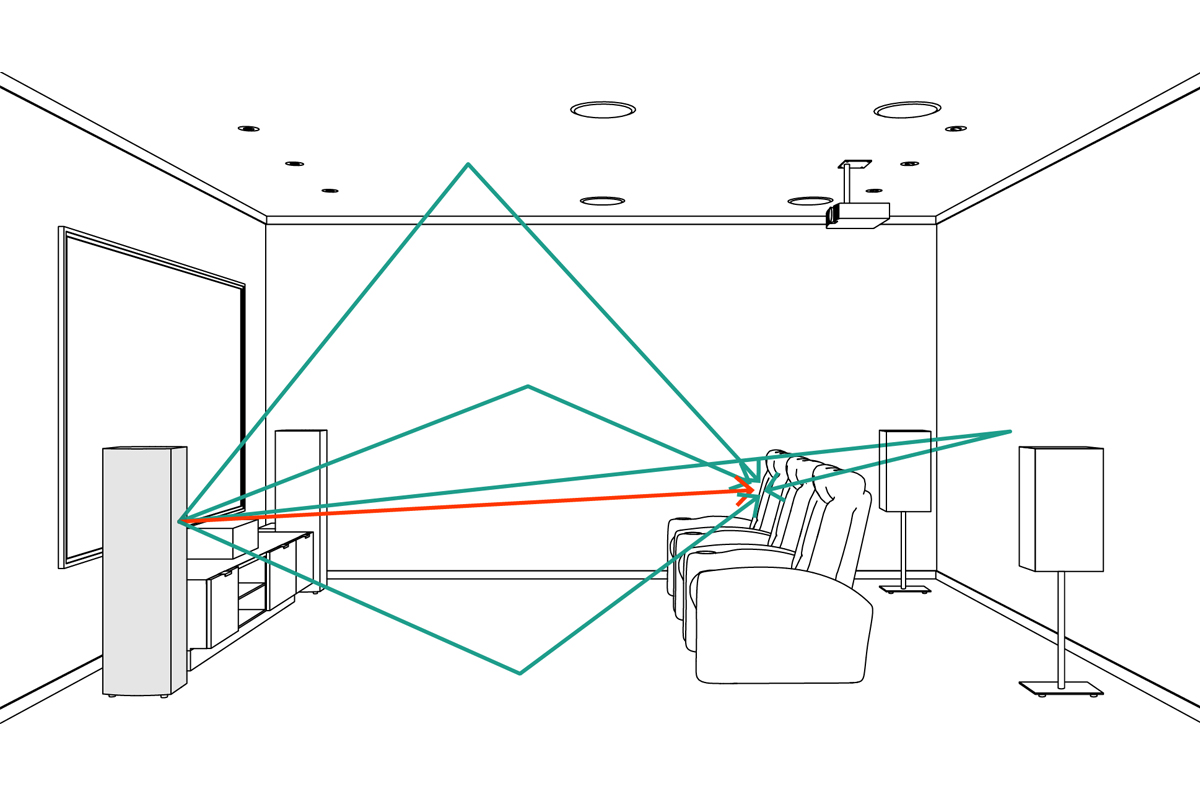
Sound waves produced in a room bounce off the walls, ceiling, and floor, touching hard surfaces with strong-reflective material finishes like concrete or glass. This leads to the creation of reflections that can interfere with the clarity and intelligibility of the sounds, speech or music.
Acoustic panels are needed to reduce the amount of sound reflection in a room because they are made from materials that absorb sound waves. Therefore, they improve the overall sound quality and clarity, making it easier to hear and understand speech, music, or other sounds. Additionally, acoustic solutions can help reduce background noise levels, making it easier to focus on tasks or conversations.
How do acoustic panels work.
When sound waves hit the porous surface of a sound absorbing panel (such foam, fabric, PET wool, etc.), some of the energy from the sound wave is dissipated into the form of heat, reducing the sound energy that is then reflected back into the room.
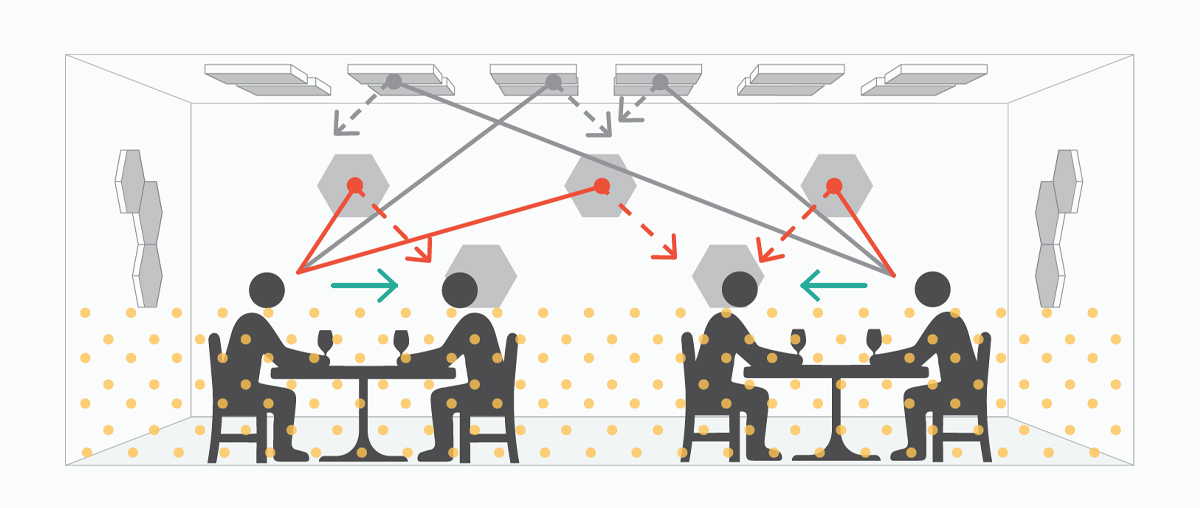
The effectiveness of an acoustic panel in absorbing sound waves can be quantified by its NRC (Noise Reduction Coefficient). NRC is an average rating of how much sound an acoustic panel can absorb. A higher NRC rating means the panel is more effective at absorbing sound. And a low NRC rating means that the panel is less effective in absorbing sound.
What are the acoustic panels we should we use?
There are different acoustic elements according to their function for sound treatment and their form and design. Acoustic panels can be divided between more common sound-absorbing panels, sound-diffusion panels and bass traps. Sound-absorbing panels are mostly made from materials such as foam, acoustic fabrics, fiberglass, or more innovative materials developed from recycled PET, conceived to trap and absorb sound waves that would otherwise bounce around a room. On the other hand, sound-diffusion panels are made to help spreading the energy evenly by the room, creating a sense of spaciousness inside. Bass traps panels are specialized acoustic solutions intended to absorb low-frequency sound waves.
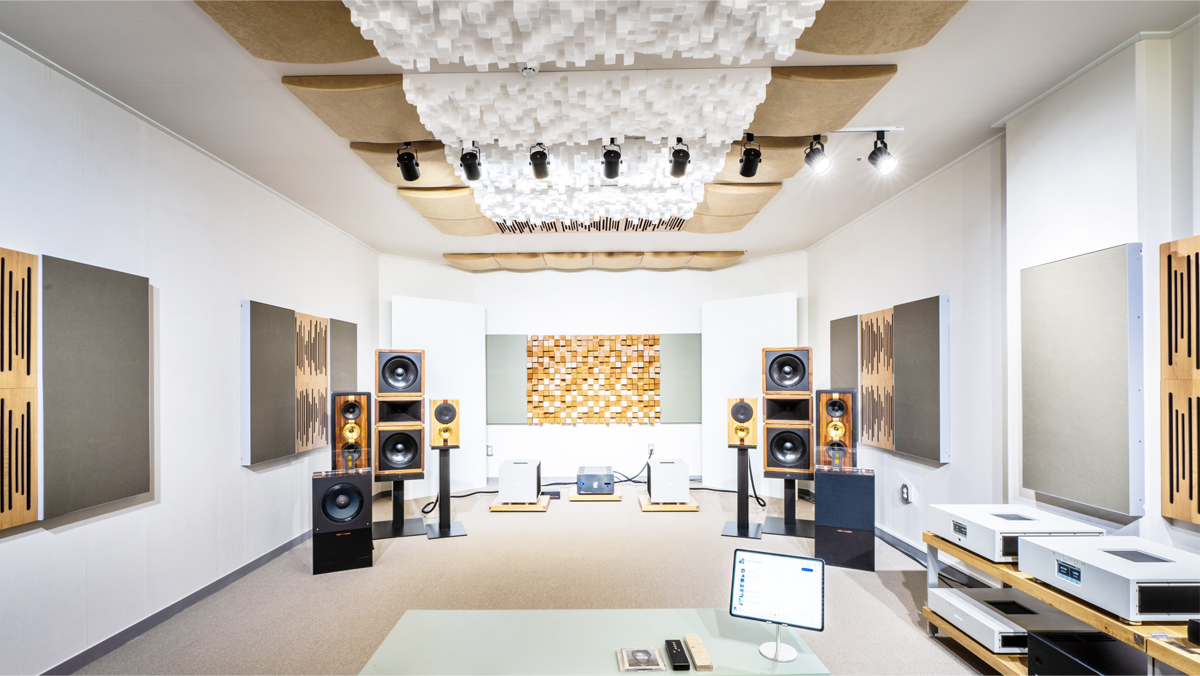
Acoustic solutions according to the form and design
- Wall-mounted panels, such as Flat Panel VMT, Cinema VMT, Cinema Round Premium, VicPattern Ultra, and Wavewood Ultra Lite.
- Ceiling-mounted panels, such as Flat Panel VMT and Flat Panel PET.
- Ceiling suspended Clouds, such as ViCloud VMT 3D, ViCloud VMT Flat and GEN_VMT PENRAY 01 Cloud.
- Ceiling suspended Baffles, such as Suspended Baffle VMT 3D and Suspended Baffle PET MKII.
- Wall-mounted acoustic tiles, such as Vixagon VMT, GEN_VMT PENRAY Tiles.
- Acoustic wallpapers, such as VicWallpaper VMT.
- Corner-mounted bass traps, such as Mega Bass Trap VMT and MBT VMT XXL, Super Bass Extreme Ultra and SBEU VMT.
- Freestanding acoustic solutions, such as VicTotem Ultra VMT and Vari Bass Ultra.
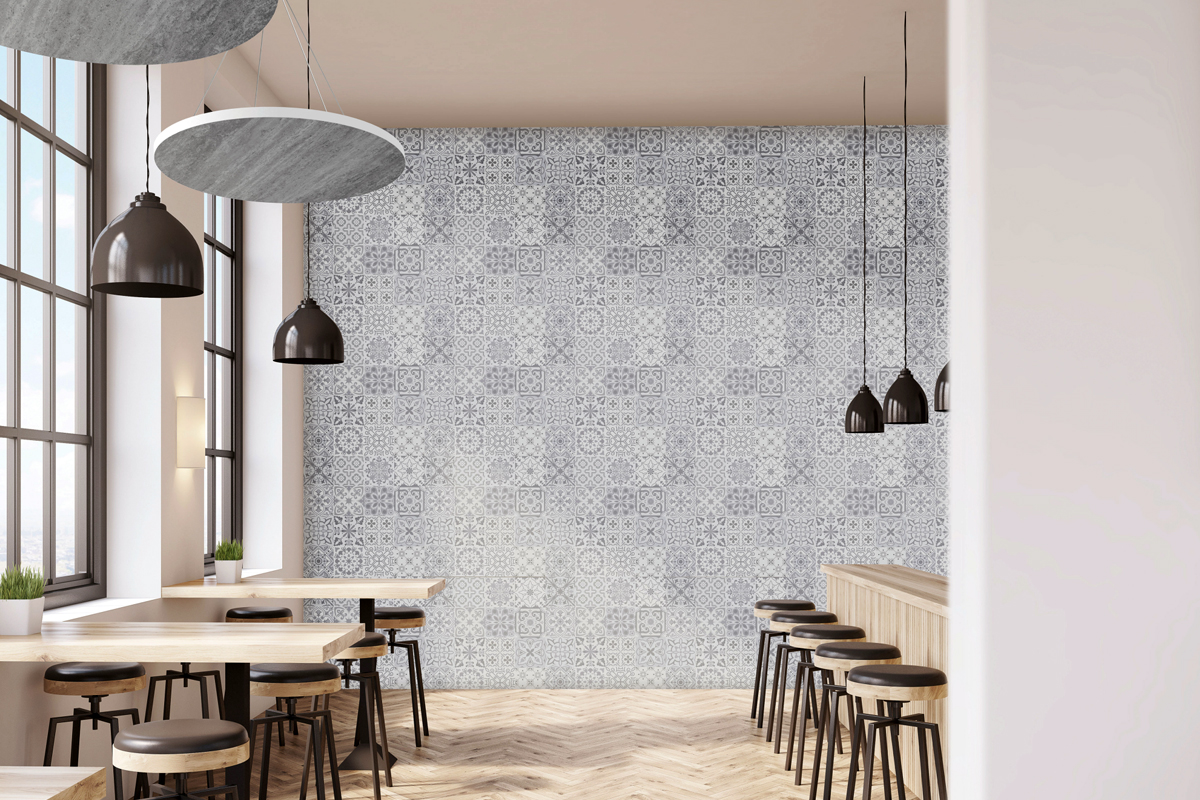
Wall panels and tiles
Acoustic wall panels and tiles are adhesive-backed panels that can be directly applied to walls. They provide sound absorption and, therefore, they will help in the control of reflections, which make these elements suitable and really useful for its use in spaces where there’s limited wall space, such as home offices and small recording studios.
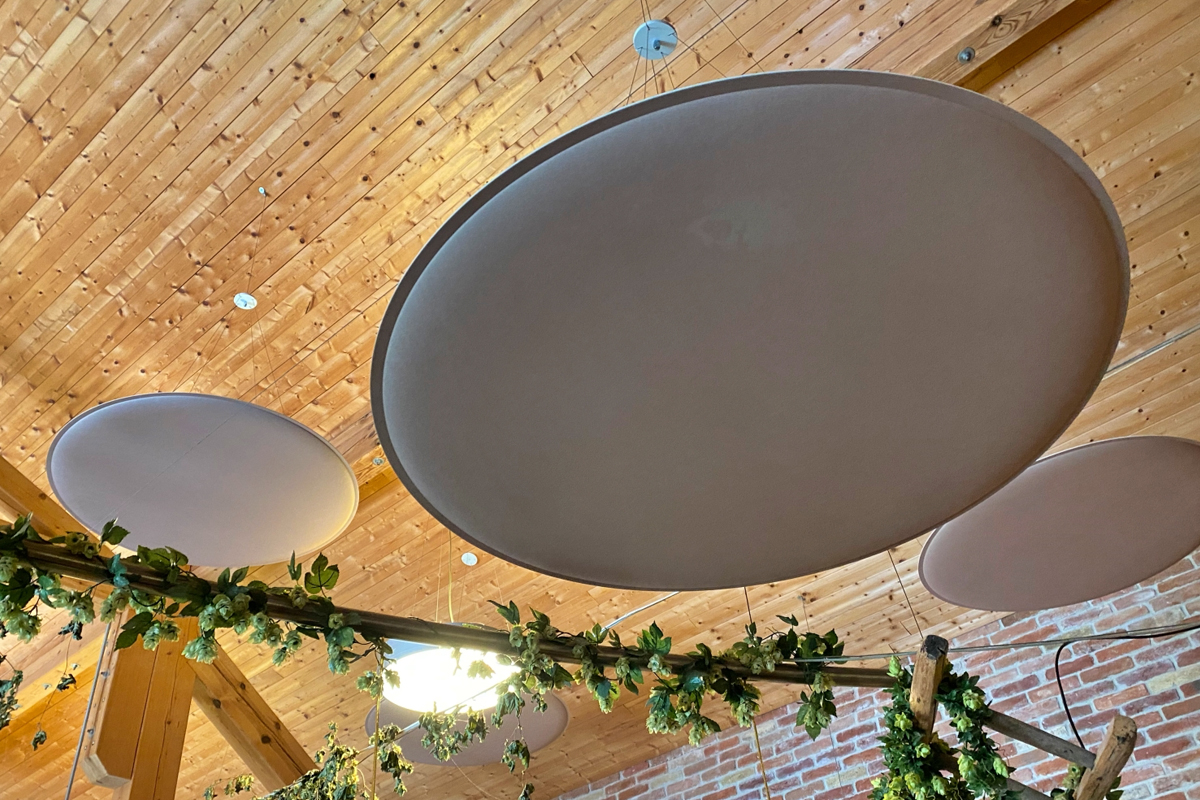
Suspended clouds
Ceiling clouds are suspended acoustic elements that are installed on the ceiling to control sound reflections and reduce overall noise levels. They are commonly used in open spaces, such as offices, restaurants, and classrooms, to improve speech intelligibility and reduce noise distractions. Being suspended, each unit represent twice the area of absorbing material exposed to the sound waves that a common wall panel with the same surface area represent, making them a very effective solution.
What are acoustic panels made of.
Acoustic panels are made of a a large variety of materials that are designed to absorb or diffuse sound waves. Here are some of the most common materials used: Foam: Foam panels became a popular option for acoustic treatment. They are lightweight, easy to install, and come in a variety of shapes and sizes. Foam panels are typically made from open-cell foam, which allows sound waves to penetrate into the panel and, as a result, be absorbed. Wood: Wood panels are often used as diffusers to scatter the sound waves and create a more natural-sounding acoustic environment. They can be made from several different woods and in various shapes and sizes. Other common materials include Fiberglass, typically covered with a fabric, Mineral wool (an insulation material highly effective at absorbing sound waves). Both are often used in combination with other materials to create a finished product.
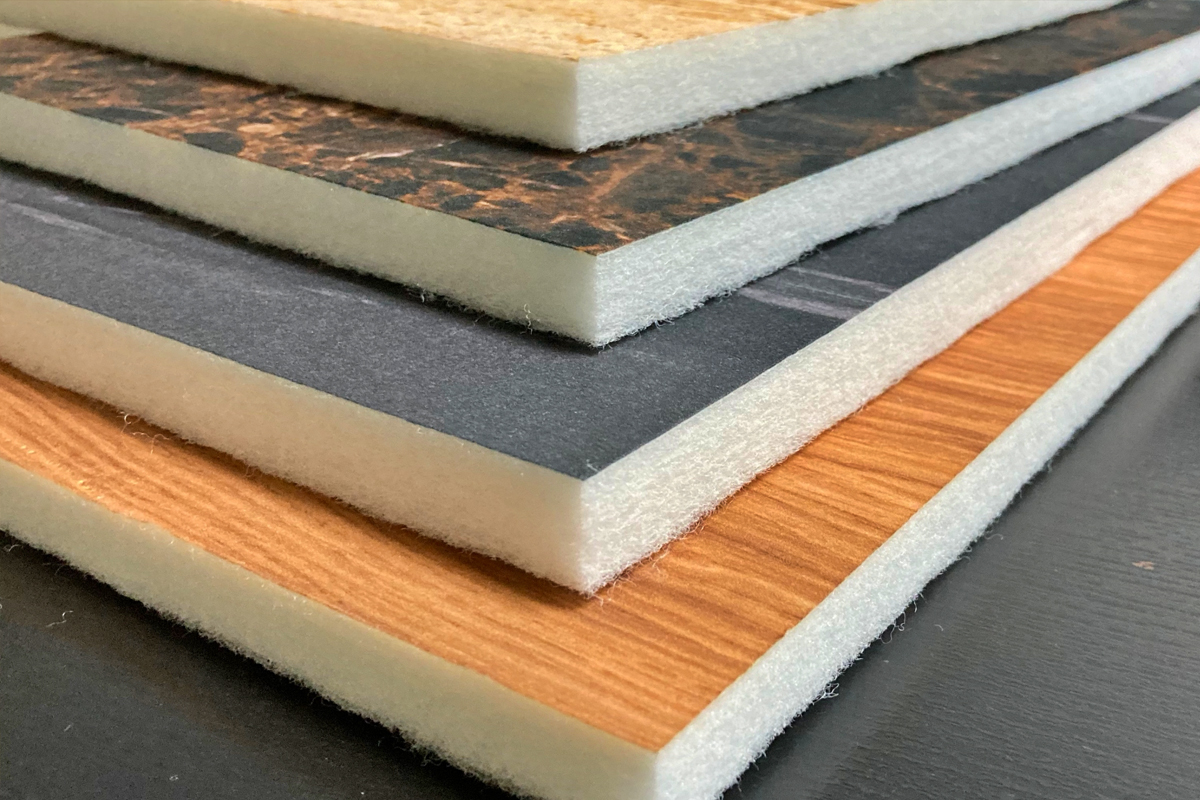
New sustainable materials
As the world becomes increasingly focused on sustainability, there has been a growing interest in acoustic panels made from sustainable materials. One of the most innovative solutions is the use of PET, obtained from recycled plastic. Through extensive research and testing, Vicoustic fine-tuned this raw material to develop VicPET Wool, a non-woven textile enhanced for superb acoustic performance while predominantly made from recycled plastic bottles.
This material is used across a wide range of products, including the entire line of Virtual Material Technology, known as VMT, composed of panels and clouds such as: Flat Panel VMT, ViCloud VMT Flat, ViCloud VMT 3D, VicWallpaper VMT, Vixagon VMT, VicOffice line, and the new GEN_VMT line. With the innovative dyeing technique introduced by Virtual Material Technology (VMT), these panels are an acoustic solution that can simulate concrete, marble, wood and other materials, achieving an amazing and realistic look in any setting, being free of paint and fabric coverings.
When do we need acoustic treatment.
It’s really frequent to have a room with several acoustic issues, requiring the installation of acoustic panels whenever certain sound-related problems impact negatively the room's sound quality, speech intelligibility, and overall comfort.
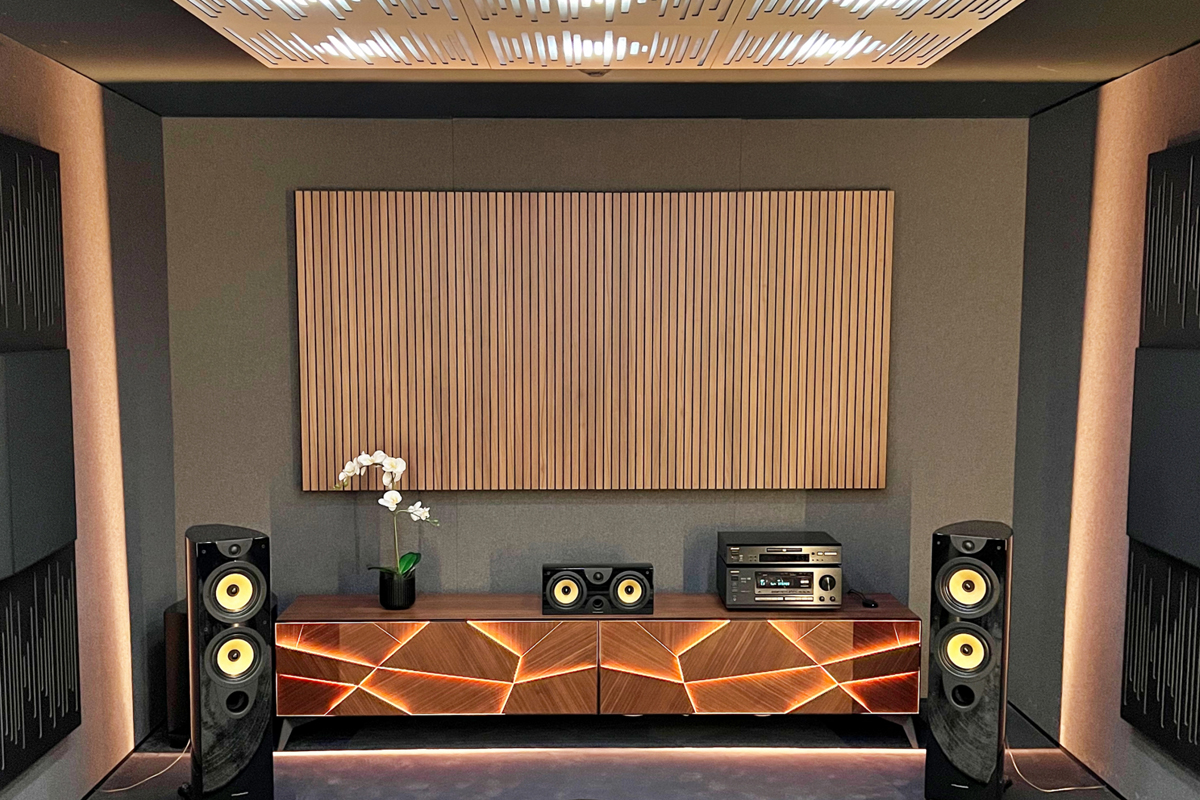
Here are some common signs that indicate a room may need acoustic solutions:
Excessive Echo and Reverberation: If you notice a prolonged echo or excessive reverberation after speaking or making noise in the room, it suggests that sound waves are bouncing off hard surfaces without sufficient absorption.
Poor Speech Intelligibility: When it's difficult to understand speech clearly in a room, especially in larger spaces or rooms with high ceilings, it indicates that sound reflections are interfering with the direct sound.
Standing Waves and Resonances: Low-frequency standing waves and resonances can cause specific frequencies to be excessively amplified or canceled out in certain spots within the room.
Unwanted Room Modes: Room modes are resonant frequencies that cause certain frequencies to build up and others to cancel out, resulting in uneven bass response.
Distorted Sound Reproduction: In spaces where audio equipment is used, such as home theaters or recording studios, distorted sound reproduction may occur due to reflections and resonances.
Privacy Concerns: In offices, conference rooms, or medical facilities, privacy may be compromised if sound easily travels from one area to another whiten the same room.
Overly Live or Dead Acoustics: Some rooms may have overly live acoustics (too much echo and reverberation) or overly dead acoustics (excessive sound absorption, leading to a lack of natural sound).
If you observe any of these issues in a room, it's a strong indication that acoustic treatment is necessary.
Where to place acoustic panels.
The placement of acoustic panels in a room depends on the room's size, shape, and function. The goal is to strategically place the panels to absorb the sound, creating a balanced environment and reducing any standing waves that may exist.
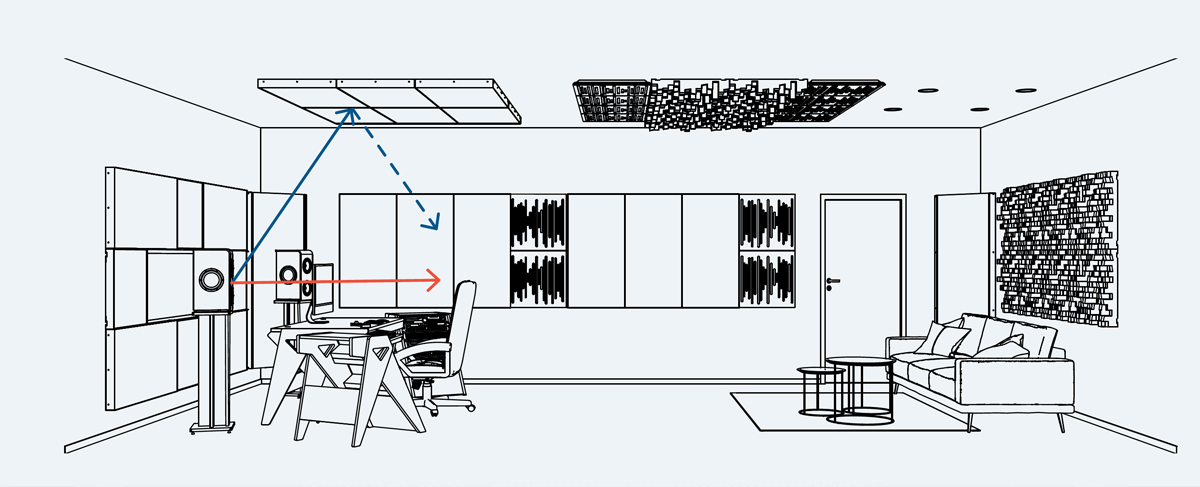
In general, it is best to place acoustic panels on the walls and ceiling of a room, particularly in areas where sound reflections are the strongest and most critical. Commonly, the panels are placed in the following locations:
In general, it is best to place acoustic panels on the walls and ceiling of a room, particularly in areas where sound reflections are the strongest and most critical. Commonly, the panels are placed in the following locations:
First reflection points: These are locations where sound waves bounce off the walls or ceiling directly to the listener's ears. Acoustic panels are often placed on the wall or ceiling at these points to absorb these reflections.
Corners: Location where the maximum pressure levels occur within the room. Placing bass traps (panels specially designed to absorb low-frequency sound wave) in the corners can help to deal with low end frequency problems.
Behind the speakers or performers: Placing acoustic panels behind speakers or performers can help to absorb sound waves that would otherwise reflect off the wall behind them and interfere with the sound.
Throughout the room: To achieve a balanced sound and reduce overall room reverberation, the panels can be placed throughout the room, particularly in areas where sound reflections are the strongest.
The specific placement of acoustic panels depends on the specific needs of the space, and a professional acoustic consultant can help determine the best placement for optimal sound quality.
Which rooms need acoustic treatment.
Acoustic solutions can benefit a wide range of rooms and spaces, depending on the specific acoustic issues and desired sound quality. Here are some types of rooms that often benefit from the installation of acoustic panels:
/ Recording studios and sound mastering rooms
Recording studios, broadcasting facilities, mixing and mastering control rooms, are all examples of pro-audio related spaces that rely heavily on acoustic panels to achieve accurate sound recording and mixing, mitigating unwanted echoes, reverberation and sound reflections. Such rooms require acoustic treatment to create a balanced and accurate sound environment for professionals working with audio recordings.
/ Home Studios
Musicians, content creators, and podcasters benefit from acoustic panels in their home studios to control sound reflections and ensure accurate monitoring during recording and mixing sessions.
/ Home cinemas
The use of acoustic panels is important in home cinemas to improve sound quality and reduce unwanted echoes and reverberations, since the goal in a Cinema Room acoustic design is to provide the audience a neutral acoustic environment, for a clear and complete film experience as the filmmaker intended.
/ Listening Rooms
Dedicated hi-fi listening rooms benefit from acoustic panels to create a neutral and balanced acoustic environment, allowing audiophiles to hear music with greater detail and accuracy.
/ Open Office Spaces
In modern office environments with open layouts, acoustic panels are used to control noise levels and provide better speech privacy, creating a more focused and productive workspace.
/ Conference Rooms
Acoustic solutions are used in conference rooms to improve speech intelligibility and reduce noise distractions, creating a more productive meeting space.
/ Classrooms
Acoustic solutions in classrooms help improve speech intelligibility for both teachers and students, creating a conducive learning environment.
/ Restaurants and Cafes
Acoustic panels are used in dining spaces to reduce overall noise levels, creating a more comfortable and enjoyable dining experience.
/ Gymnasiums
Gyms, fitness centers and therapy rooms can control noise reflections and vibrations caused by exercise equipment or large spaces, creating a more pleasant workout environment using acoustic solutions.
/ Home Offices
Home offices benefit from acoustic panels to create a quieter and more focused work environment, reducing external noise distractions.
/ Auditoriums and Theaters
Large auditoriums, theaters, and concert halls often require acoustic treatment to optimize sound distribution and reduce echo and reverberation.
/ Hotel Lobbies and Lounges
Acoustic panels in hotel lobbies and lounges create a more inviting and comfortable space for guests, reducing noise and improving the overall ambiance.
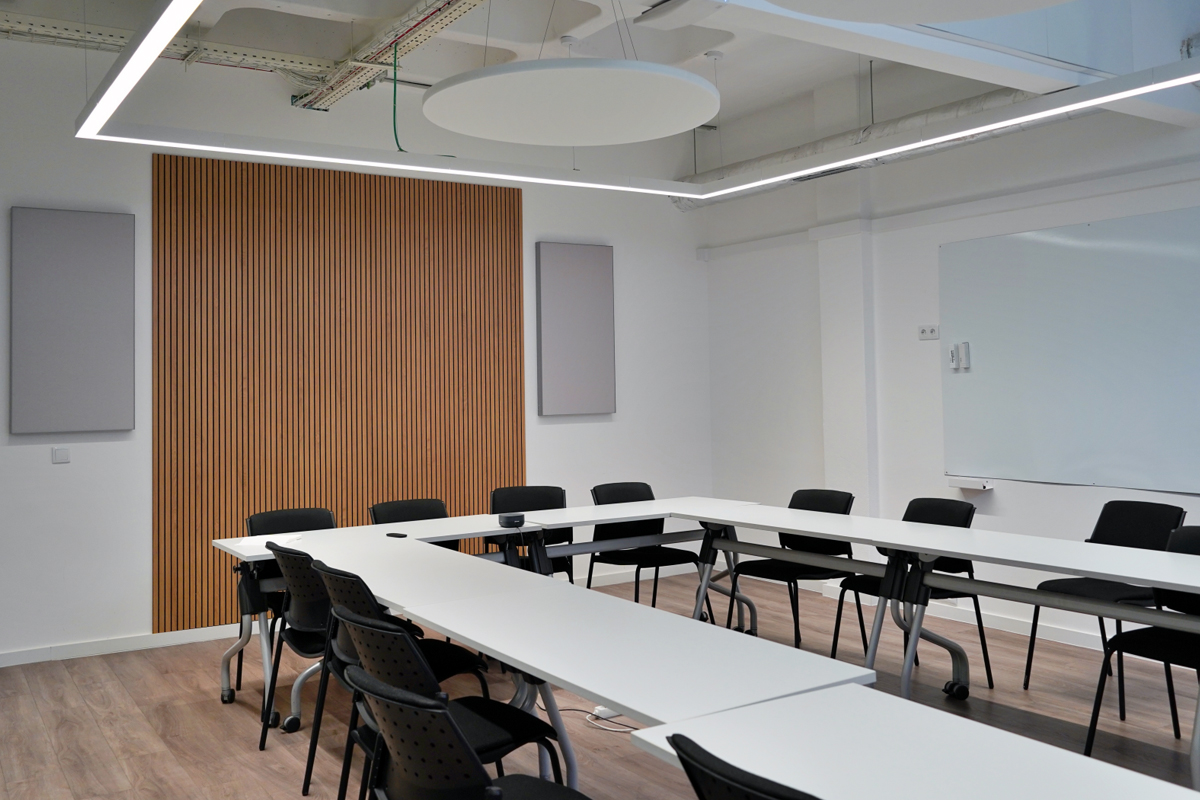
Who can advise on acoustic treatment.
The extent and type of acoustic treatment may vary depending on the specific requirements of each space. Acoustic consultants or Acousticians can help assess the room's acoustic characteristics and recommend the most suitable acoustic panels for each room's specific needs and provide guidance on their placement and installation to obtain the best results.
To get a professional project with a case study for a specific room, you can request a project from a team of acousticians experts.
AthensProAudio Team ©













